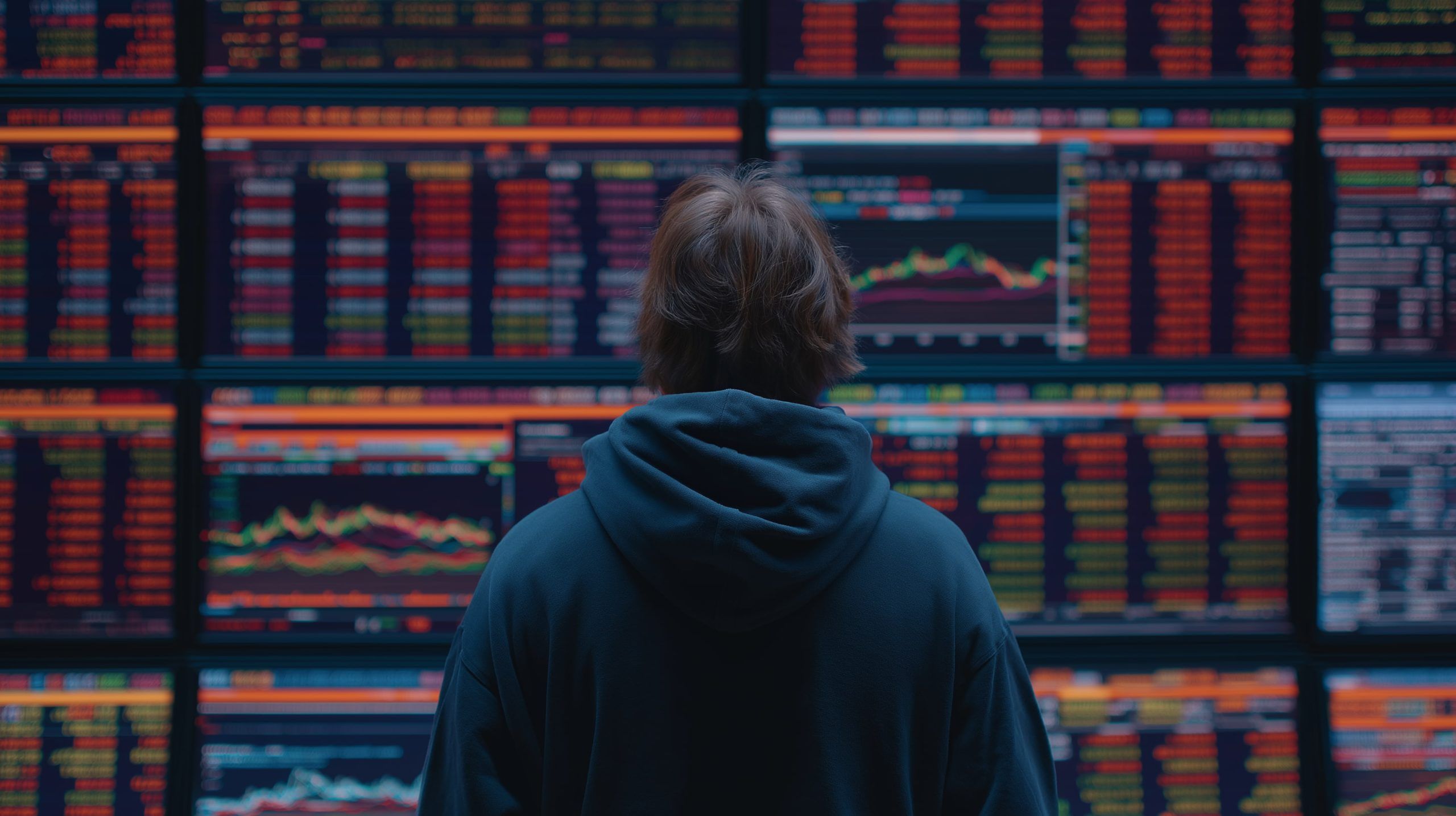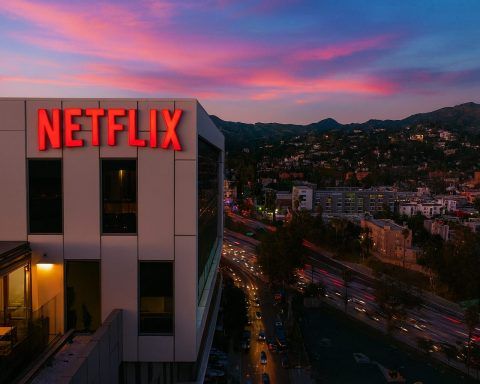- ASX 200 slides despite global rally: Australia’s ASX 200 index fell about 0.5% to ~9,012 on Tuesday, even as Wall Street closed at all-time highs overnight (S&P 500 +1.2%, Dow +0.7%, Nasdaq +1.9%) amid US-China trade optimism [1].
- Local giants crash: Two heavyweight stocks – biotech leader CSL and tech firm WiseTech Global – plunged ~15% each, dragging the ASX lower. CSL slashed its profit outlook and shelved a vaccine spinoff, tanking its shares -14.9% to around A$178 [2]. WiseTech sank -14.2% (after an intraday -17.5% freefall) following an ASIC/Federal Police raid into alleged insider trades by its founder [3].
- Gold price tumbles, miners hit: Spot gold slumped over 3% to about $US3,980/oz – a steep drop after breaching the $4,000 mark – as trade-deal optimism unwound safe-haven demand [4]. Aussie gold miners were slammed: e.g. Resolute Mining -12%, Newcrest -4% [5]. Even rare earths stocks dived on easing supply fears – Lynas Rare Earths plunged ~14% to A$15.81 amid news of a US-China deal framework pausing tariffs on critical minerals [6].
- Domino’s soars on buyout buzz: Bucking the trend, Domino’s Pizza Enterprises stock skyrocketed ~20% intraday (ending +7%) after a report that Bain Capital was weighing a A$4 billion takeover of the pizza chain [7] [8]. The speculative surge prompted a trading halt and an exchange price query, to which Domino’s said it was unaware of any formal offer.
- Mixed signals and forecasts: Investors are “cautiously optimistic” as global risks ease, but extended valuationsand central bank moves loom large. The Fed is widely expected to cut interest rates by 0.25% on Wednesday amid cooling inflation, fueling the U.S. rally [9]. In contrast, RBA Governor Michele Bullock struck a hawkish tone, warning that a high inflation reading (Q3 CPI out Wednesday) would be a “material miss” that might delay any rate relief [10]. Analysts foresee more upside if trade peace and rate cuts materialize – one forecast sees the ASX 200 pushing toward 9250–9500 by year-end if it stays above support ~9000 [11] – but they also caution that any “unexpected hiccup” in earnings or geopolitics could spark a pullback from these lofty levels [12].
ASX Sinks Amid Global Cheer
Global markets are riding high on hopes of a U.S.–China trade truce and easier monetary policy, but Australia’s share market didn’t get the memo. On Tuesday (Oct 28), the S&P/ASX 200 index closed down 0.5%, surrendering about 43 points to finish near 9,012 [13]. This retreat stands in stark contrast to Wall Street’s overnight rally – U.S. indices surged to record peaks on Monday, buoyed by optimism that President Trump and China’s President Xi will strike a trade deal at an upcoming summit [14]. The S&P 500 jumped 1.2% to a historic 6,875, the Dow hit 47,544 (+0.7%) and Nasdaq 23,637 (+1.9%) [15].
So why did Australian stocks lag despite this global euphoria? The answer lies in a perfect storm of home-grown shocksthat hit key sectors on the ASX:
CSL & WiseTech Wipe Out Billions
Firstly, CSL Limited, one of Australia’s largest companies, saw its shares crater nearly 15%. In a surprise announcement, CSL cut its FY2026 earnings guidance and abandoned plans to spin off its Seqirus vaccines division, citing volatile market conditions [16]. The news unnerved investors, knocking CSL’s stock down to roughly A$178 – its worst single-day drop in decades. It also coincided with turmoil at the company’s annual general meeting; with 42% of shareholders voting against CSL’s pay report, the firm received a rare “second strike” on executive remuneration (though a board spill was averted) [17] [18]. The heavy sell-off in this biotech blue-chip alone wiped out tens of billions in market value and sliced over 0.3 percentage points off the ASX 200 index.
At the same time, tech darling WiseTech Global suffered an even sharper plunge intraday, at one point down 17.5%before closing about 14% lower [19]. Australia’s corporate regulator ASIC, along with federal police, raided WiseTech’s Sydney headquarters late Monday as part of an investigation into alleged improper share trades by founder and ex-CEO Richard White [20]. Media reports allege White sold over A$200 million of stock during a blackout period without disclosure [21]. The probe raised serious governance red flags for the $20+ billion logistics software firm. “It’s very disappointing for long-term shareholders, and shareholders will be questioning how much further WiseTech shares can fall,” said Jessica Amir, market strategist at Moomoo, noting the stock had already slid 40% year-to-date [22]. Indeed, the latest plunge took WiseTech to six-month lows around A$71 [23]. These twin wipe-outs in CSL and WiseTech – which together account for a hefty chunk of the ASX 200 – were a major factor in the overall market decline [24].
Gold and Rare Earths Dive on Trade Optimism
Adding to the pain, mining stocks – particularly gold and rare-earth miners – tumbled on the day. The price of goldhas been on a roller coaster, and late Monday it collapsed over 3% (more than $130) to dip back below the symbolic $4,000/ounce level [25]. What drove the sudden slump? As U.S.–China trade tensions eased, investors rotated out of safe havens; in short, “the fading threat of new tariffs has fueled risk-taking,” and safe-haven gold fell about 2% in a day [26]. That trend continued into Tuesday’s session. Gold settled around $3,982/oz after the rout [27], putting pressure on Australia’s gold producers. Major gold miners like Newcrest Mining dropped over 4%, with mid-tier players hit even harder (Resolute Mining sank -12%, Capricorn Metals -6%) [28].
It wasn’t only precious metals. Rare earths companies – which had been high-flyers – suddenly reversed as the trade outlook brightened. Lynas Rare Earths, a lynchpin of Australia’s critical minerals sector, saw its stock plunge 13.9% to A$15.81 [29]. The sell-off came amid reports that Washington and Beijing reached a preliminary agreement to pause new tariffs and export controls on critical minerals (like rare earth elements), easing supply disruption fears [30]. In other words, the very geopolitical risks that had buoyed Lynas’s valuation (China’s dominance in rare earth refining and threat of export curbs) are now perceived to be receding. “Developments in US-China trade relations impacted market sentiment towards rare earth producers” as concerns about supply restrictions eased, one analysis noted [31]. Smaller rare earth players followed suit – sector-wide, many gave up 10–15% on the day [32]. While some of these stocks had rallied strongly in anticipation of supply shortages, Tuesday’s pullback suggests investors are locking in profits as a trade truce appears within reach.
Bright Spot: Domino’s Delivers a Surprise Jump
Amid the carnage, one notable winner on the ASX was Domino’s Pizza Enterprises. The fast-food stock suddenly spiked as much as 20% in morning trade after The Australian Financial Review reported that global private equity firm Bain Capital is considering a bid to buy out Domino’s in a deal worth up to A$4 billion [33]. The rumor sent traders into a frenzy, lifting Domino’s share price from about $15 to above $18 within minutes. The move was so sharp that the ASX slapped the stock with a trading halt pending a formal query. In response to the price query, Domino’s said it had no information to explain the spike other than media speculation, effectively denying any confirmed offer. After a brief pause, the stock resumed trading and cooled off from its peak, but still closed up +7.2% on the day at $16.56 [34] – a remarkable gain in an otherwise downbeat market. The buyout buzz follows a steep decline in Domino’s shares earlier this year, and highlights how beaten-down companies can become takeover targets. Analysts note that Bain Capital is familiar with Domino’s (it owns Domino’s Japan franchise) and could find value if it can turn around performance [35] [36]. While Domino’s “meme stock”-like surge grabbed headlines, its positive impact on the overall index was not enough to offset the broader losses in mining and healthcare/tech names.
Wall Street Rallies on Trade Truce & Fed Hopes
In contrast to Australia’s turbulence, global market sentiment has been upbeat this week, especially in the United States. Hopes are running high that a trade détente between the world’s two largest economies is at hand. Over the weekend, top U.S. and Chinese officials announced “significant advances” toward a comprehensive trade deal, hashing out a framework for Presidents Trump and Xi to potentially sign at the upcoming Pacific Rim summit [37]. By Monday, investors were in full risk-on mode: U.S. stock futures spiked (Nasdaq futures +1.4%, S&P +0.9% pre-market) and global stocks opened sharply higher on the trade optimism [38]. True to form, Wall Street’s main indices all posted fresh record highs by the closing bell.
Beyond trade, expectations of monetary policy easing are fueling the rally. The U.S. Federal Reserve kicked off a two-day meeting, with markets almost universally betting on a 0.25% rate cut – the Fed’s second straight cut – to be announced Wednesday [39]. Cooling inflation data have given Fed officials cover to ease rates, and Fed Chair Jerome Powell has signaled more cuts are “on the table” if needed [40]. “With the Fed on track to cut rates, extending the [market’s] run would appear to hinge on this week’s lineup of high-profile earnings releases,” said Chris Larkin, an analyst at ETrade, referring to the slew of Big Tech earnings due (Alphabet, Microsoft, and Meta report Wednesday, with Amazon and Apple on Thursday) [41]. So far, results have been robust – about 86% of S&P 500 companies beating forecasts this quarter [42] – which has only added fuel to the rally.
It’s worth noting that Asia-Pacific markets delivered a more muted reaction than Wall Street. Many regional bourses rose early Tuesday but then pared gains as investors adopted a wait-and-see stance. Japan’s Nikkei 225, for instance, hit an intraday record before slipping 0.6% by close [43]. Hong Kong’s Hang Seng also reversed from green to -0.6% [44]. “Asia opens not with fireworks, but with an uneasy calm… Traders aren’t chasing the rumor this time; they’re watching, weighing, waiting for something real to sign,” observed Stephen Innes of SPI Asset Management, alluding to caution ahead of the actual Trump-Xi meeting [45]. Indeed, President Trump is on a high-profile Asia tour – after visiting Japan, he’s set to meet Xi Jinping on Thursday on the sidelines of the APEC summit in South Korea [46]. Trump struck an optimistic tone, telling reporters he “really feels good” about clinching a deal with China [47]. If a formal agreement (“Phase One” trade deal, as some call it) is announced, it could mark a significant de-escalation of the trade war that has weighed on the global economy for years.
However, seasoned observers warn that not all issues will be resolved by a handshake. The prospective deal reportedly focuses on tariff rollbacks and increased commodity purchases, but leaves thornier disputes (like tech security and intellectual property) largely untouched [48]. “While these developments have lifted market spirits, analysts remain skeptical that the underlying issues… will be fully resolved,” said Fawad Razaqzada, a strategist at City Index. “Nevertheless, traders have embraced the risk-on mood” for now [49]. This dynamic was evident in other asset classes: as stocks surged, bond prices dipped (the U.S. 10-year Treasury yield edged up to ~4.0%), and traditional safe havens like gold slumped hard [50]. Even the Japanese yen – often a refuge in times of uncertainty – gained slightly after days of losses, reflecting a tentative step back from extreme risk-taking [51]. In summary, the global backdrop for equities is the most buoyant it’s been in quite some time: a potent mix of trade peace, Fed rate cuts, and strong corporate earnings has propelled indices to new heights. That optimism set the stage for the ASX’s Tuesday session – but clearly Australia had its own idiosyncratic hurdles that prevented it from joining the party.
Outlook: Cautious Optimism, but Mind the Risks
Looking ahead, market participants are navigating a crosscurrent of excitement and anxiety. On one hand, the stars seem aligned for a year-end rally: the U.S. is easing policy and inching toward resolving trade disputes, and even Europe and China have shown resilience (European stocks are near highs; China’s Shanghai Composite briefly broke 4,000, a 10-year peak [52]). The ASX 200 itself notched a record high just last week and is up strongly year-to-date, buoyed by sectors like tech and mining amid the global AI boom and commodities demand [53] [54]. Technical analysts at IG Markets note that after a consolidation in early October, the ASX 200 has resumed an uptrend; as long as the index stays above support around 8970–9000, they project a move toward 9250 in the near term and potentially 9500 by year-end if positive catalysts continue [55]. In other words, the recent pullback could prove a temporary blip if the broader bullish drivers reassert themselves.
However, investors would be wise to keep an eye on potential spoilers. One immediate focus is Australia’s inflation report due Wednesday. The September-quarter CPI will be pivotal for the Reserve Bank of Australia’s next interest rate decision (set for Melbourne Cup Day next week). RBA Governor Bullock reiterated that policy is “data-dependent”, and signaled that an upside surprise in inflation – say, a core inflation reading of 0.9% for Q3 vs the RBA’s 0.6% forecast – would be a “material miss” that might force the central bank to stay hawkish [56]. In fact, after Bullock’s comments, some analysts think the RBA could even hike rates again if inflation proves uncomfortably sticky, despite a recent uptick in unemployment. Such a stance is far less dovish than the U.S. Fed’s, and Tuesday’s equity market reaction suggests Aussie traders are pricing in that risk. “The RBA’s tone put a bit of a handbrake on sentiment,” noted one market commentator, especially for rate-sensitive sectors like property and utilities.
Beyond macroeconomics, valuations are a concern after such a long rally. The forward price/earnings multiples for many stocks are well above historical norms. As Nationwide’s Mark Hackett quipped, current rich valuations are “the best argument for bears” in this market [57]. And if the rosy scenarios (trade truce, Fed easing, soft landing for the economy) don’t all pan out perfectly, there’s room for disappointment. “Any unexpected hiccup could spark a pullback at these lofty levels,” warned Anthony Saglimbene, global market strategist at Ameriprise Financial [58]. That “hiccup” could be an earnings miss from a big tech firm, a resurgence of inflation, a geopolitical flare-up, or even hiccups in China’s economy (which could hurt Australia’s export-heavy sectors).
For now, most experts still lean towards the bullish camp, but with a healthy dose of caution. The prevailing sentiment is perhaps best described as optimistic but not complacent. “With the Fed likely to deliver the hoped-for cut and a trade deal potentially in hand, the year-end rally could have legs – barring any surprises in US-China negotiations or other shocks,” as ETrade’s Larkin noted [59]. Traders will be closely watching the outcomes of the Fed meetingWednesday and the Trump-Xi summit on Thursday. Any confirmation of a tariff rollback deal or a dovish Fed tone could ignite another leg up for equities globally – which would likely lift Australian shares in turn, assuming no new bombshells from the likes of CSL or WiseTech.
In summary, the Australian market’s stumble on 28 October was a reminder that local factors can overshadow global tailwinds in the short run. Gold’s crash and company-specific blows created a perfect storm that nullified the positive influence of Wall Street’s rally – at least for one day. Going forward, if global conditions remain favorable (trade peace, lower interest rates) and if domestic headwinds like inflation or corporate missteps are kept in check, there is scope for the ASX to regain momentum. But investors should heed the lesson that setbacks can strike suddenly. As one strategist put it, “these are very headline-driven markets.” For now, the bulls remain in charge, but they’ll be keeping one finger on the exit button as they ride the rest of 2025’s wild market journey toward its climax [60] [61].
Sources: Official ASX market updates and ABC News Live blog [62] [63]; Reuters and AP reports via ABC, NDTV and others [64] [65] [66]; analysis by IG Markets and TS2.tech [67] [68]; expert commentary from City Index and Ameriprise [69] [70]; The Australian Financial Review (AFR) report on Domino’s; and company filings.
References
1. www.wdio.com, 2. www.ig.com, 3. www.ig.com, 4. www.ig.com, 5. www.ig.com, 6. thebull.com.au, 7. www.ndtvprofit.com, 8. www.abc.net.au, 9. ts2.tech, 10. www.ig.com, 11. www.ig.com, 12. ts2.tech, 13. www.abc.net.au, 14. www.wdio.com, 15. www.wdio.com, 16. www.ig.com, 17. www.abc.net.au, 18. www.abc.net.au, 19. www.ig.com, 20. www.ig.com, 21. www.reuters.com, 22. www.reuters.com, 23. www.abc.net.au, 24. www.ig.com, 25. www.ig.com, 26. ts2.tech, 27. www.ig.com, 28. www.ig.com, 29. www.abc.net.au, 30. thebull.com.au, 31. thebull.com.au, 32. www.sharecafe.com.au, 33. www.ndtvprofit.com, 34. www.abc.net.au, 35. insideretail.com.au, 36. www.investing.com, 37. ts2.tech, 38. ts2.tech, 39. ts2.tech, 40. ts2.tech, 41. www.ndtvprofit.com, 42. ts2.tech, 43. www.wdio.com, 44. www.wdio.com, 45. www.wdio.com, 46. www.wdio.com, 47. www.ndtvprofit.com, 48. www.ndtvprofit.com, 49. www.ndtvprofit.com, 50. ts2.tech, 51. www.ndtvprofit.com, 52. www.wdio.com, 53. ts2.tech, 54. www.ig.com, 55. www.ig.com, 56. www.ig.com, 57. ts2.tech, 58. ts2.tech, 59. www.ndtvprofit.com, 60. ts2.tech, 61. www.ndtvprofit.com, 62. www.abc.net.au, 63. www.abc.net.au, 64. www.wdio.com, 65. www.ndtvprofit.com, 66. www.reuters.com, 67. www.ig.com, 68. ts2.tech, 69. www.ndtvprofit.com, 70. ts2.tech







